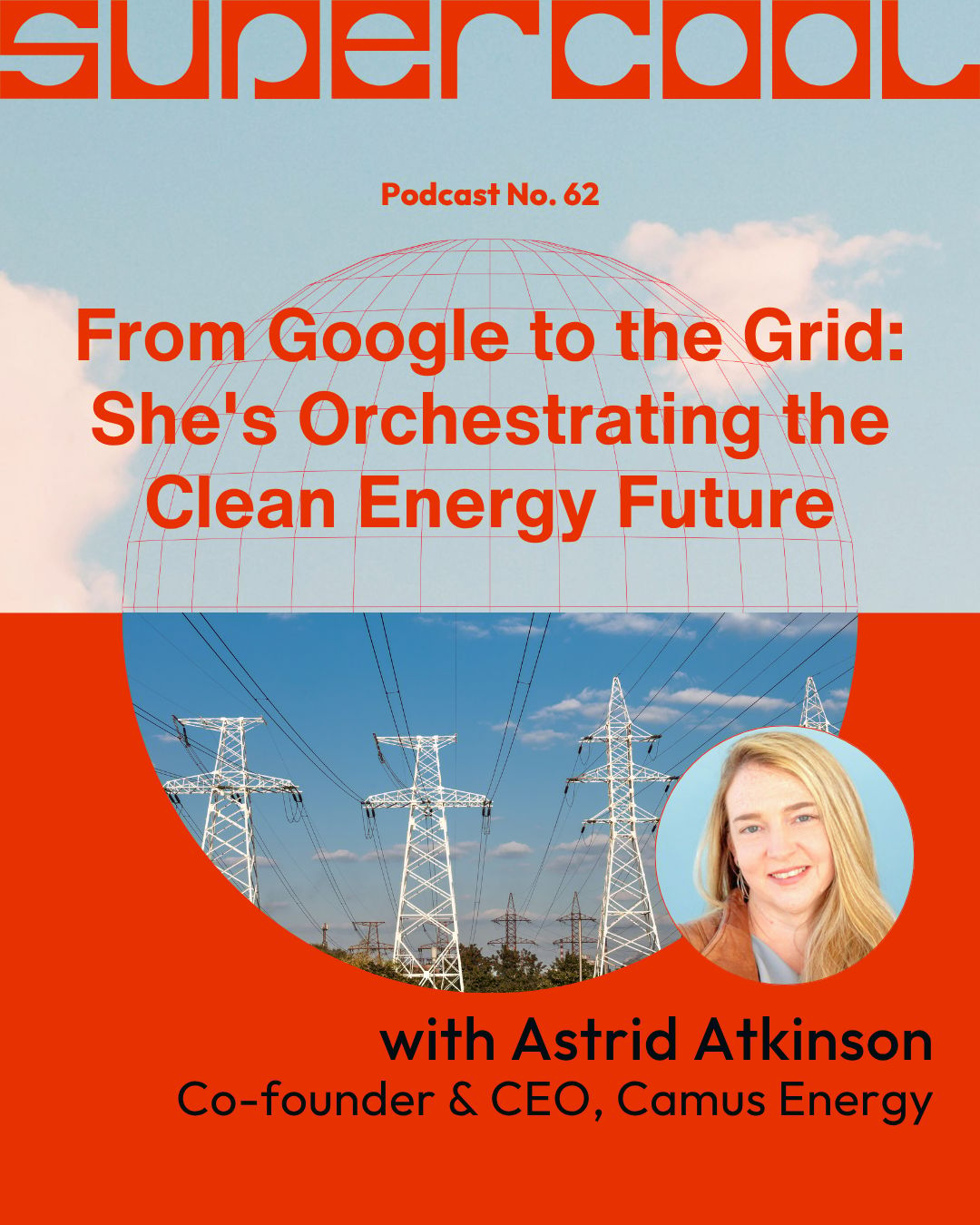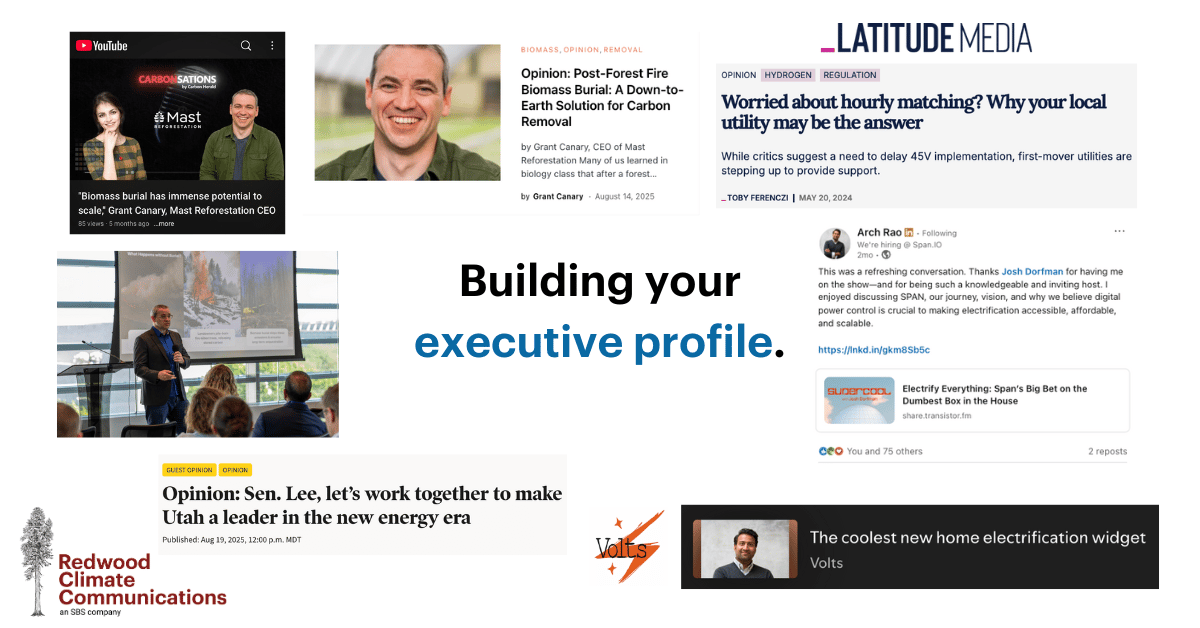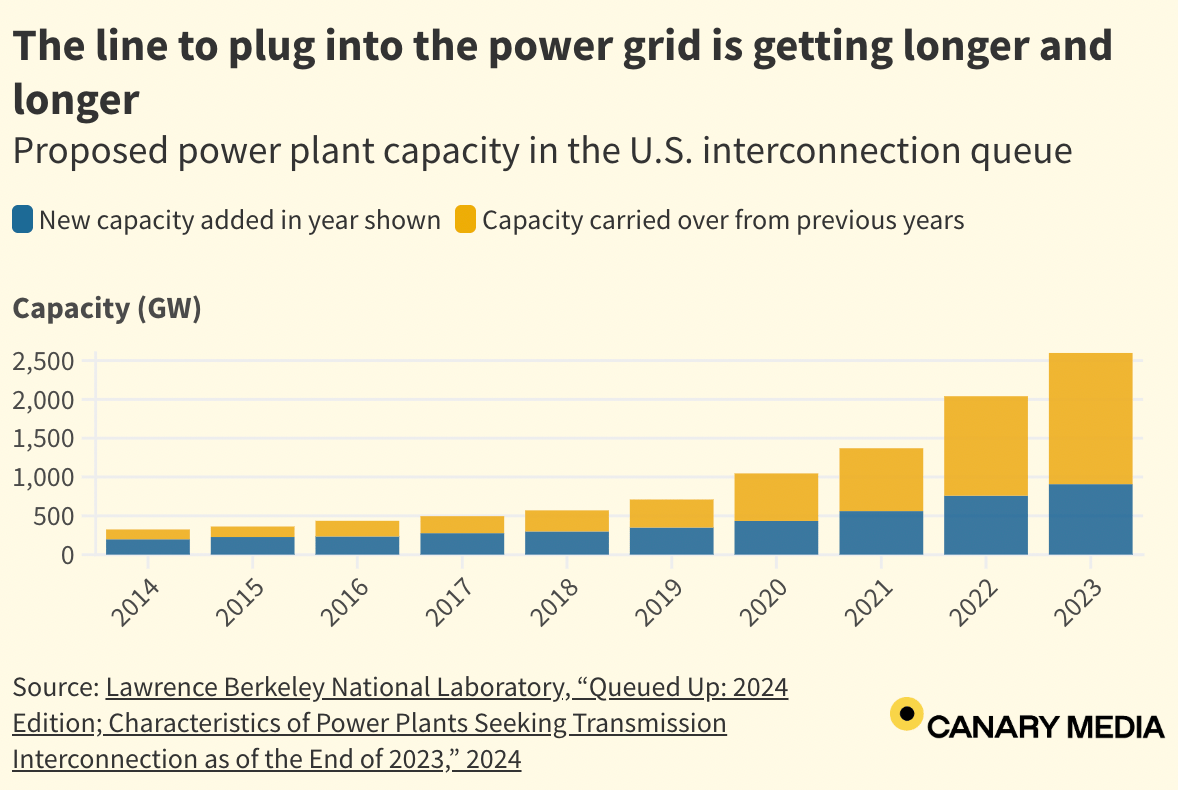- Supercool
- Posts
- 🌐 From Google to the Grid: She's Orchestrating the Clean Energy Future
🌐 From Google to the Grid: She's Orchestrating the Clean Energy Future
Camus builds the software layer the grid is missing — turning clean energy projects into connected assets.
Climate Adoption Archetype: 🎨 Lifestyle Upgrade
Make it aspirational.
The internet arrived in Astrid Atkinson’s hometown on a train.
A traveling demo pulled into a remote station in rural Australia, giving a teenager a fleeting glimpse of the network that would connect her to the rest of the world.
Years later, she would describe it this way:
“I’d had that experience of coming from the very outer edge of the universe to its center from the tech world perspective.”
From the edge of the universe to its center—Silicon Valley, Google, and operating one of the biggest machines ever built: Google’s global computing infrastructure.
Now as co-founder and CEO of Camus Energy, Astrid is focused on the one machine that rivals it in scale yet ratchets up the consequence—the U.S. power grid, the largest machine on Earth.
From Google’s Backbone to the Grid
At Google, Astrid spent fifteen years keeping big chunks of the internet running with “five nines” reliability. Translation: 99.999% uptime, or less than six minutes of downtime a year.
Search, Maps, YouTube, Gmail — if google.com went down between 2007 and 2012, her team got paged.
She led the rollout of cloud computing inside Google, the backbone migration that stitched its products together, and the middleware team at the heart of Search. It meant scaling a machine made of dozens of data centers, thousands of network links, trillions of requests a day.
The trick, she says, was never more hardware. “It’s too expensive.” The trick was software — betting not everything would fail at once, oversubscribing, balancing loads, and squeezing capacity closer to the edge. It’s the same logic behind 5G, which carries far more traffic than its lines suggest.
That idea — flexibility instead of brute force — became her operator’s DNA.
By the mid-2010s, Astrid asked a mentor at the VC firm Sequoia what else was worth working on.
“I like really, really large-scale problems,” she said.
“I’m sorry, but you’ll have to stay at Google,” he replied.
At the time, he was right.
Then climate made the decision for her. Her son will be 37 in 2050 — the year net zero is supposed to be delivered. One generation to solve it. Hers.
The only machine that matched Google’s scale was the grid — sprawling, complex, critical. To reach net-zero, it must double, then double again by 2050.
Unlike Google, the grid has no orchestration layer. No software directing flows, balancing strain, or managing flexibility. That’s the missing piece Camus set out to build — the operator’s tools for a decentralized, electrified, 21st-century grid.
Why Orchestration Matters
Utilities have modernized in steps — smart meters, digital maps, advanced distribution systems. Each took years. That pace no longer works.
Camus isn’t trying to control every home battery and thermostat. Its solution is to build the visibility layer and turn it into signals utilities can act on:
“I need you to turn up, I need you to turn down.”
“Perhaps you could charge a little later at night.”
“Perhaps your data center could turn down during critical windows.”
“This window is yours, not that one.”
As Astrid puts it: “It’s not a direct control model, it’s a signal model.”
But orchestration won’t take root in an industry wired for caution. To understand why, you have to look at how utilities make decisions.
Utilities, the Reluctant Partners
For the operators running America’s 3,000 utilities, the mission is reliability. And that mission breeds caution. Plan years ahead. Avoid change. And when change is unavoidable, make it as safe as possible.
That mindset is most evident in connecting new projects to the grid. Utilities test for the absolute worst case — maximum load, maximum generation, multiple failures all at once.
Even if it only might happen a few hours a year, the result is the same: waiting years for utilities to maybe, possibly—but not likely—spend millions on upgrades.
Thousands of projects currenlty sit idle, languishing in interconnection queues. To understand the scale: nearly 2,600 gigawatts of renewable energy and storage projects are awaiting interconnection approval — roughly twice the country’s total existing generation capacity.
And the irony is stark: the grid isn’t close to maxed out; it’s underused. Astrid says it’s “typically not more than about 40% utilized at any point.”
This became the entry point for Camus. The same approach that kept Google online — visibility and flexibility instead of brute-force upgrades — could give utilities the tools to make faster decisions about grid connectivity, speeding up interconnections and moving the future forward.
Interconnection as the Entry Point
The challenge for Camus is that utilities don’t buy orchestration software. It isn’t a category. It isn’t a budget line. And it isn’t how utilities think.
What they do buy are fixes for the problems they can’t avoid. Interconnection is that problem.
By solving for interconnection, Camus gained a foothold in the industry—generating revenue to address utility pain while building the control knobs that the future grid will increasingly depend on.
As Astrid puts it: “Interconnection is the pivot point for the transition — the place where the grid either stays stuck or evolves.”
Proof in the Control Room
Camus launched in 2019. Six years later, it’s already embedded in daily operations.
Utilities: Eleven utility-scale customers — including three of the country’s largest investor-owned utilities — covering millions of ratepayers and managing gigawatts of load.
Developers: A flexible interconnection product now used by major solar developers and multiple data center projects.
Adoption speed: Utilities normally take years to bring in new tech. Camus is already inside control rooms, proving the model works.
Impact: Each project connected flexibly becomes a controllable knob. Instead of piling on costly upgrades, Camus helps utilities unlock grid capacity.
From Tolkien to Transmission Lines
Astrid still leans on the stories that shaped her — the books she read before the internet reached rural Australia.
Lord of the Rings convinced her that “big problems are always tackled by small, ordinary groups who choose to take them on.”
She’s built one of those groups. For her, the grid has become the ultimate quest — sprawling, complex, as demanding as Google’s backbone, and now central to the clean energy future.
🌐 Supercool Takeaway
The clean energy transition won’t scale on hardware alone. It scales when every connection is flexible — when visibility and signals turn projects into assets utilities can orchestrate. That’s the layer Camus is building, clearing bottlenecks to accelerate electrification.
Operator Takeaways
Start at the bottleneck. Interconnection is where projects either move forward or stall.
Build trust with visibility. Real-time models give operators the confidence to say yes.
Make flexibility the default. Projects connect without years of costly upgrades.
Orchestrate to scale. Flexibility embedded from day one is how the grid grows fast enough.
This Week’s Podcast Episode
From Google to the Grid: She's Orchestrating the Clean Energy Future
🎙️ Listen on Apple, Spotify, YouTube, and all other platforms.

↓
Stat of the Week: 2,600
That’s the number of gigawatts now stuck in the U.S. interconnection queue. A backlog more than double today’s total electricity use — projects waiting on grid hookups instead of delivering power.
Quote of the Week:
If you don’t have great visibility, past, present, and future, into how your system’s behaving, you need to be really conservative… being very, very conservative and making as few changes as possible doesn’t meet the need of doubling load on the current grid in the next 10 years and doubling it again.
↓
Sponsored Content
Turn your thoughts into thought leadership

Climate tech CEOs are their companies’ greatest evangelists. But between fragmented social media communities and AI slop, it’s hard for them to stand out and win attention.
At Redwood Climate Communications we turn opinions and insights into industry-defining content and find the channels where it breaks through.
We’ve helped leaders of companies and nonprofits of every size and stage enhance their brands. Visit our services page to learn how we can help.
↓
Virtual Power Plants Are in the Orchestra Too
Camus’s orchestration layer points toward the next frontier: Virtual Power Plants. They’re the way thousands of scattered devices — batteries, appliances, chargers — can move as one. In practice, it means homes and businesses can provide energy on demand when the grid signals, and get paid for it. A long-promised idea is now gaining momentum.
Astrid sounds a note of caution, though. To many utilities, VPPs look like “more big problems” unless they’re built for reliability first. Today’s leading operators are proving it can be done.
Residential
Sunrun is proving scale at the household level. In California, more than 75,000 home batteries already discharge as one in Sunun’s CalReady program. Similar programs are underway in Texas and New York.
Renew Home, created through the merger of Google Nest Renew and OhmConnect, is embedding itself in the devices households already own. By orchestrating thermostats and (soon) appliances, it already manages more than 3 GW of flexible load and is aiming for 50 GW by 2030. The shifts are invisible to the household but powerful in aggregate.
Tesla ties its Powerwalls directly into grid operations. In California and Texas, batteries discharge automatically when the grid is strained — while still reserving backup power.
GoodLeap enters through finance. Its GoodGrid program links the batteries it funds, paying homeowners to participate and building toward 1.5 GW of capacity.
Commercial & Industrial
Budderfly aggregates small businesses — HVAC, refrigeration, and lighting across thousands of sites like your neighborhood Taco Bell, Sonic, and KFC — a segment utilities have long overlooked. It launched its VPP operations earlier this year.
Voltus bundles more than 7 GW of factories, data centers, and big-box retailers into dispatchable grid capacity.
CPower manages about 6.7 GW of flexible demand across 23,000 sites — from hospitals to universities to office towers. Its recently announced acquisition by NRG puts one of America’s biggest utilities directly into the demand response and virtual power plant market.
Global
Octopus Energy’s Kraken has become the world’s largest residential VPP, orchestrating more than 2 GW of devices across Europe — from EV chargers to home batteries — into a single controllable asset, a benchmark U.S. players are racing to match.
Lastly, Puerto Rico shows the power of Virtual Power Plants to support the grid at scale when reliability is crucial. This past summer, LUMA dispatched 70,000 home batteries in a single night, delivering 48 megawatts — enough to prevent rolling blackouts.
↓
Where Supercool traveled this week:
Podcast:
↓
Interested in Advertising with Supercool?
Connect with future-forward decision-makers seeking next-gen climate innovations. Reach out to discuss how Supercool’s platform can help. Just hit reply to this email.
↓
Not yet subscribed to Supercool?
Click the button below for weekly updates on real-world climate solutions that cut carbon, boost the bottom line, and improve modern life.
🌐
